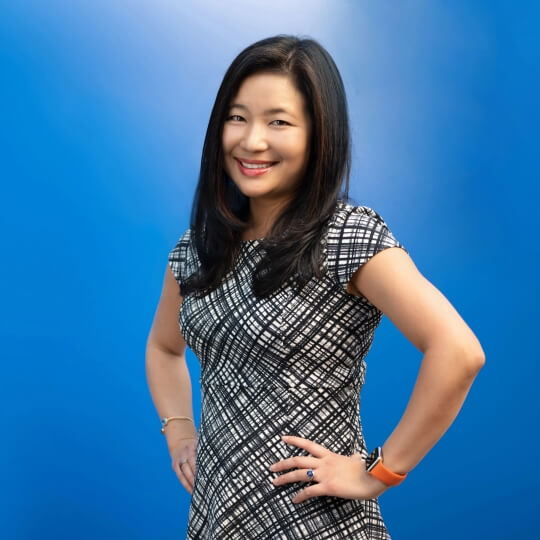Kyoko Crawford, S.B. '04
When Kyoko Crawford’s father-in-law went to see a dermatologist about a potentially cancerous spot on his back in 2014, the doctor quickly diagnosed it as benign. Instead, the dermatologist was concerned about a spot about the size of a speck of black pepper on one of his ears, which turned out to be melanoma. Crawford’s father-in-law survived the cancer diagnosis, but it taught Crawford a valuable lesson.
“As humans, we’re conditioned to not notice things that we see regularly, especially at the scale of millimeters,” she said.
With only 11,000 dermatologists in the United States, Crawford, a former biomedical engineering concentrator at the Harvard John A. Paulson School of Engineering and Applied Sciences (SEAS), recognized a demand for ways to make it easier to screen for skin cancer, whether in a physician’s office or at home. She partnered with Dr. Jean Christophe Lapiere, the same dermatologist who saved her father-in-law’s life, and co-founded SkinIO, which combines smartphone cameras with machine learning algorithms to make it easier to detect and track potentially cancerous skin lesions.
“You have an overall survival rate of 99 percent if you catch skin cancer early, so a tool to help you catch that early has a lot of value,” said Crawford, S.B. ‘04. “If you think about it, your skin is a pretty monotonous landscape, so we developed a series of models to focus on that. The beauty here is you can repeat these scans. You can come back a year later, five years later, rescan the images, and the AI will look for changes, which is the leading indicator for all skin cancers.”
When Crawford co-founded SkinIO in 2014, few companies were harnessing the power of smartphone cameras for medical applications.
“There hadn’t yet been a lot of proliferation of digital health and especially smartphone-directed health apps,” she said. “Our first market after we did validation sites was medical practices. We’d sell to dermatology practices and increasingly primary care physician practices, which would use it as part of their patient visits. There’s HIPAA compliance, so patients were more likely to accept it as part of the healthcare experience.”
Kyoko Crawford, S.B. '04, co-founded SkinIO in 2014
When the pandemic began, Crawford’s company had to pivot. Many dermatology practices closed as in-person visits decreased. With the rise of telehealth and other digital healthcare products, SkinIO looked for new markets to keep the company going. Instead of doctor’s offices, they began to look at industries at higher risk for skin cancer, such as airlines, oil drilling and construction.
“In all of those cases, you have a lot of the workforce out in the sun,” she said. “We work with a lot of unions, because not only do they tend to be in the trades that might be outside, but their healthcare is administered by trusts that provide lifetime membership. With skin cancer, your incidence gets higher as you get older. If you’re a union paying for the healthcare of your membership for life, that matters. We found these markets that ended up being huge for this type of service.”
Pivoting to new markets and understanding who pays for healthcare has been critical for SkinIO to stay in business for 10 years – no small feat, considering 90 percent of start-ups fail, and the majority of them fail within the first five years. For students considering going into entrepreneurship, especially in healthcare, Crawford also recommends avoiding the assumption your product will work best if sold directly to consumers.
“There’s a temptation to build a better way to administer healthcare and take it directly to consumers, which is always ultimately more shortsighted than people think,” she said. “A lot of people have crashed and burned with that approach. Understanding who and what the market is, who it matters to and where the value resides, is critical.”
Press Contact
Matt Goisman | mgoisman@g.harvard.edu
